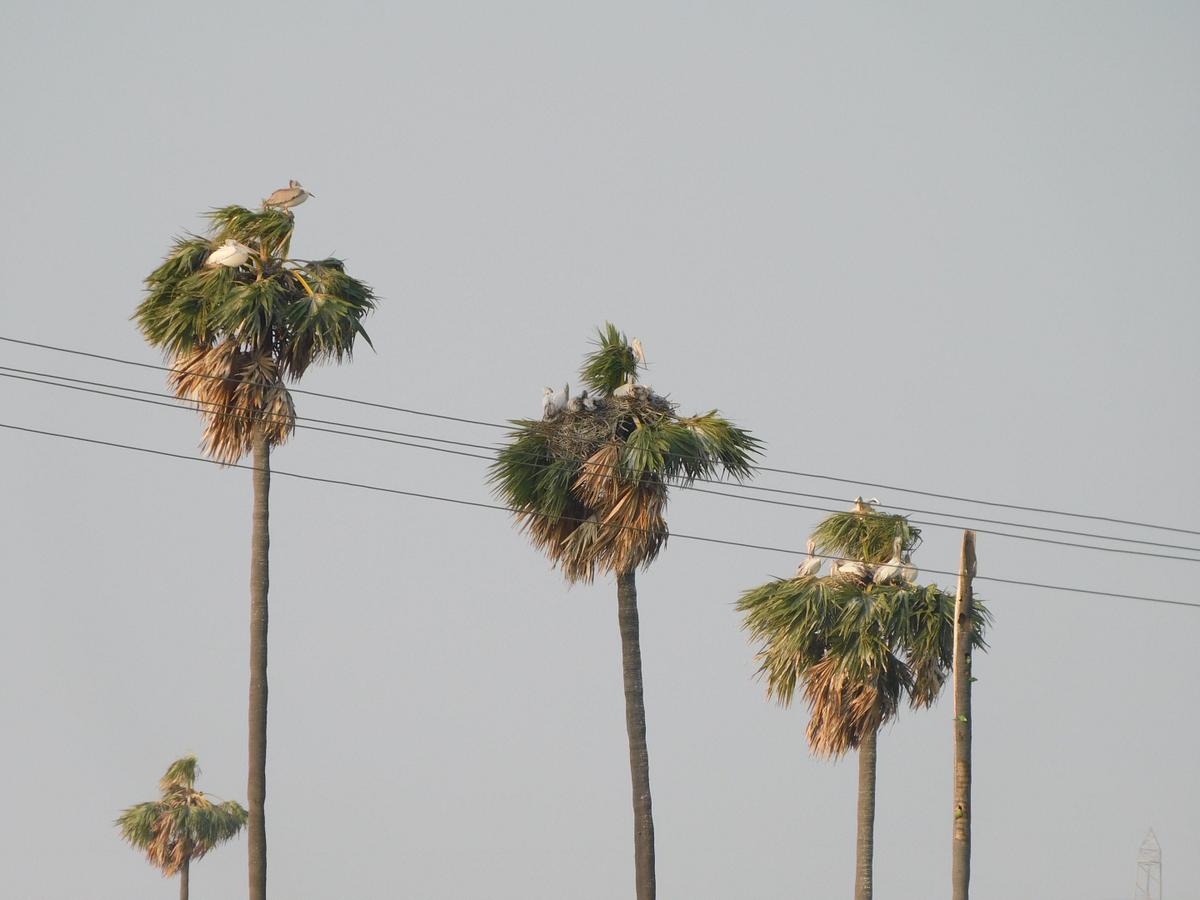Pelicans have captured 17 palm trees in Kunthankulam Photo Credit: Sasikumar Samikkan
The pelicans have reached Kunthankulam. They usually find a comfortable spot on bushes near a lake to build their nests for the breeding season. But this time, they have chosen to nest on palm trees in this area. Resident ornithologist S Balapandi, 68, says, “This is the first time in my 55-year history of observing and documenting birds in Tirunelveli.” Balapandi is from Kunthankulam, which was declared a bird sanctuary in 1994, and spends most of his days in Tirunelveli’s wetlands.
“The spot-billed pelicans arrived late last year in the hope that the lake would fill with rain in December,” explains Balapandi. “But our area doesn’t get good rainfall and so our wetlands are not full.” As a result, the pelicans flew away, and stopped to nest on tall palm trees a kilometer away from the nearby Arumneri wetland.

Each tree has three to four nests, which the birds have made by spreading soft palm leaves and twigs. Photo credit: Sasikumar Samikan
“Pelicans usually live in groups and they have occupied 17 palm trees,” says Balpandi, adding: “Each tree has three to four nests that the birds build on spreading, soft palm leaves. Made from twigs.” There are about three eggs in each nest. This adds 10 to 15 birds to each tree, making them quite crowded.
“The people of our village petitioned the district collector for help, and with the support of the district forest officer, water was released to Kothankulam for two days from the Manimuthar dam in the district,” explains Balapandi. This eased the situation a bit, and Balapandi reported nesting cormorants, darters, black-headed and glossy ibis at Kothankulam. “If more water is released it will do our birds good,” he says.
But pelicans continue to nest on palm trees. Balpandi, with his notebook and field glasses, travels on his two-wheeler to see them almost every other day.
According to S Balachandran, in-charge of the Bombay Natural History Society’s Bird Migration Study Center at Point Calimere, this is the first time such a behavior is being observed in Tamil Nadu. “However, pelicans are adaptable, and may even nest on man-made stands,” he adds.